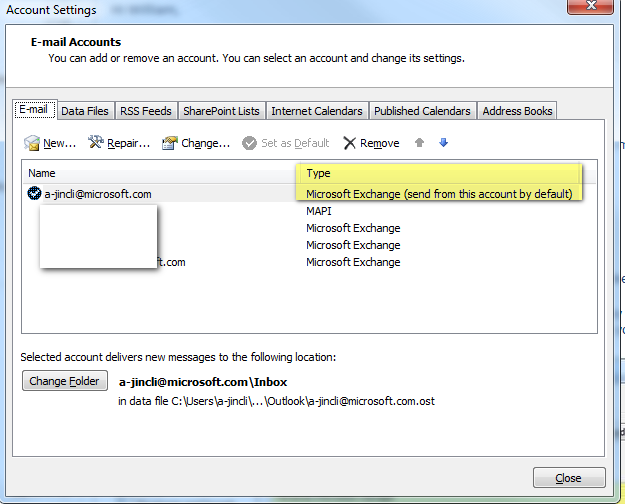On-premise Exchange and Lync Online integration
By: Sachi in Office365 Tutorials on 2012-07-14
The On-premise Exchange can be integrated with the Lync Online through this method. In fact it is not an integration but a method to achieve it. You just have to install Directory sync tool and sync all the users from your on-premise to the cloud. After that, choose the users in Office 365 and enable the lync online license for them. Thats it. Now install the lync client on the pc/laptop and the integration will work when meeting all of the following criteria.
Criteria are as follows:
- Outlook client should be at least Outlook 2007 SP2 with latest hotfix applied
- Available Lync Online service license is assigned & do not assign Exchange Online service license to these object created in Office365 MOP
- SIP address for your Lync Online should be identical to your On-Premise primary SMTP address
- The On-Premise Exchange account should be configured to the same PC where you sign in Lync client for the same account

After that, Lync client will show the presence integrated with Outlook client and the conversation history will be saved to your On-Premise Exchange mailbox. The working principle explanation is at http://technet.microsoft.com/en-us/library/gg398806.aspx Outlook 2007 makes RPC calls to resolve SIP addresses only if the Display online status next to a person name option is selected. To view this option in Outlook 2007, on the Tools menu, click Options, click Other, and then look under Person Names
In Outlook 2010, on the File ab, click Options, click Contacts, and then look under Online status and photographs
In addition, the Lync Online Presence with Outlook client only works for the account for whom configured the type as Exchange Protocol or (Outlook Anywhere). (IMAP/POP/SMTP type is not supported the feature)

Add Comment
This policy contains information about your privacy. By posting, you are declaring that you understand this policy:
- Your name, rating, website address, town, country, state and comment will be publicly displayed if entered.
- Aside from the data entered into these form fields, other stored data about your comment will include:
- Your IP address (not displayed)
- The time/date of your submission (displayed)
- Your email address will not be shared. It is collected for only two reasons:
- Administrative purposes, should a need to contact you arise.
- To inform you of new comments, should you subscribe to receive notifications.
- A cookie may be set on your computer. This is used to remember your inputs. It will expire by itself.
This policy is subject to change at any time and without notice.
These terms and conditions contain rules about posting comments. By submitting a comment, you are declaring that you agree with these rules:
- Although the administrator will attempt to moderate comments, it is impossible for every comment to have been moderated at any given time.
- You acknowledge that all comments express the views and opinions of the original author and not those of the administrator.
- You agree not to post any material which is knowingly false, obscene, hateful, threatening, harassing or invasive of a person's privacy.
- The administrator has the right to edit, move or remove any comment for any reason and without notice.
Failure to comply with these rules may result in being banned from submitting further comments.
These terms and conditions are subject to change at any time and without notice.
- Data Science
- Android
- React Native
- AJAX
- ASP.net
- C
- C++
- C#
- Cocoa
- Cloud Computing
- HTML5
- Java
- Javascript
- JSF
- JSP
- J2ME
- Java Beans
- EJB
- JDBC
- Linux
- Mac OS X
- iPhone
- MySQL
- Office 365
- Perl
- PHP
- Python
- Ruby
- VB.net
- Hibernate
- Struts
- SAP
- Trends
- Tech Reviews
- WebServices
- XML
- Certification
- Interview
categories
Related Tutorials
Copy Power Automate Flows from one environment to another
Moving changes from a development environment (sandbox) to a production environment in Dynamics 365
Microsoft Flow to sync data from SharePoint list update/delete records to Dataverse Table
Steps to create Microsoft Flow to sync data from SharePoint list to Dataverse Table
ADFS and ADFS Proxy in Windows Server 2012
365 office login (office 365 login)
Configure SSO for a domain with ADFS - Convert a domain to a federated domain in Office 365
What is Office 365 Small Business Premium?
What is Ofice 365 Home Premium
What is Office 365 Midsize Business Plan?
Migration from on-premise exchange 2003 to Office 365
Create Word, Excel, PowerPoint using Office Web Apps in Office 365
On-premise Exchange and Lync Online integration
Email limits and message limitations in Office 365
Migrating SharePoint WSS2.0 site to SharePoint Online and Backup the SharePoint Online
Comments